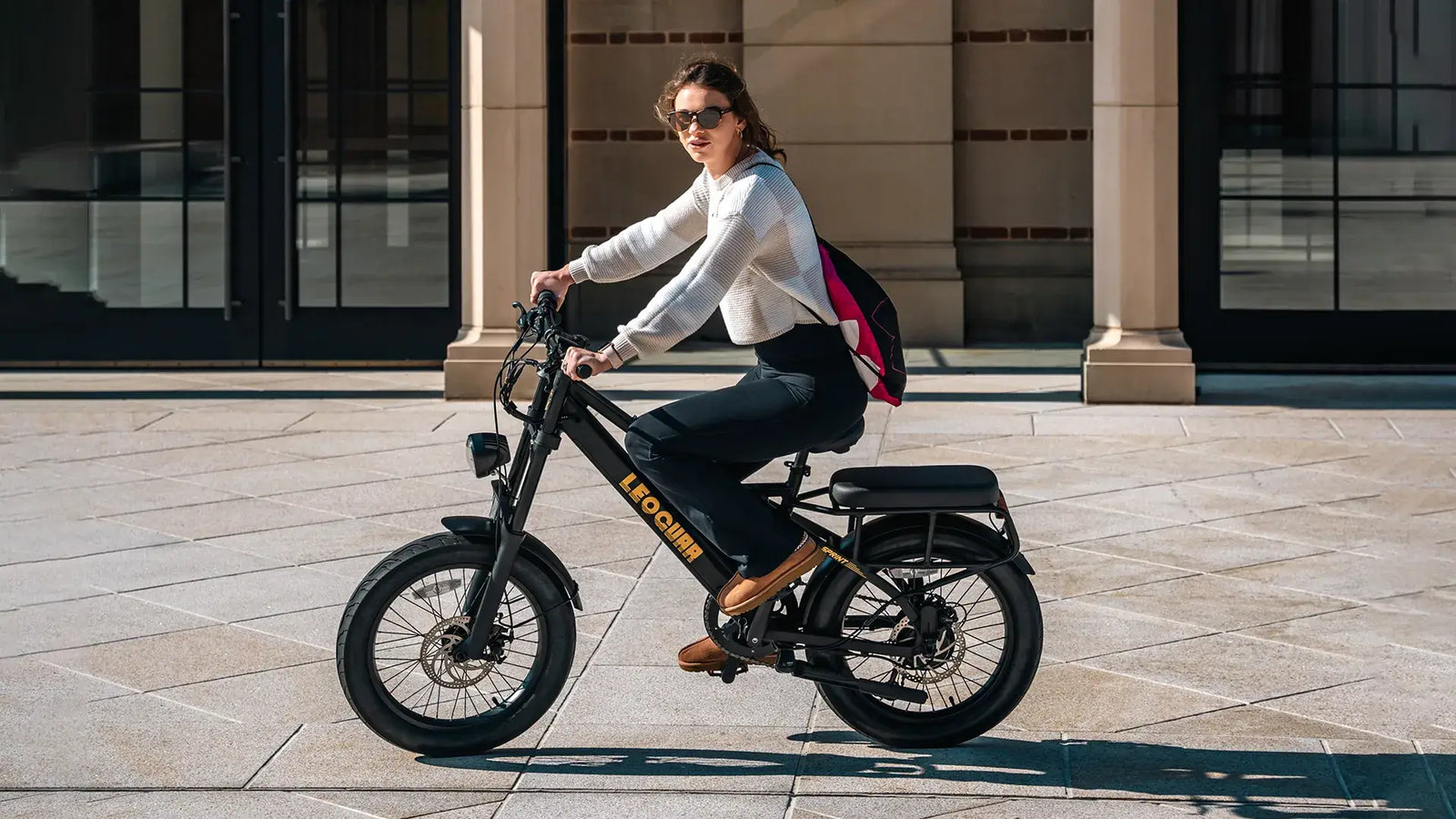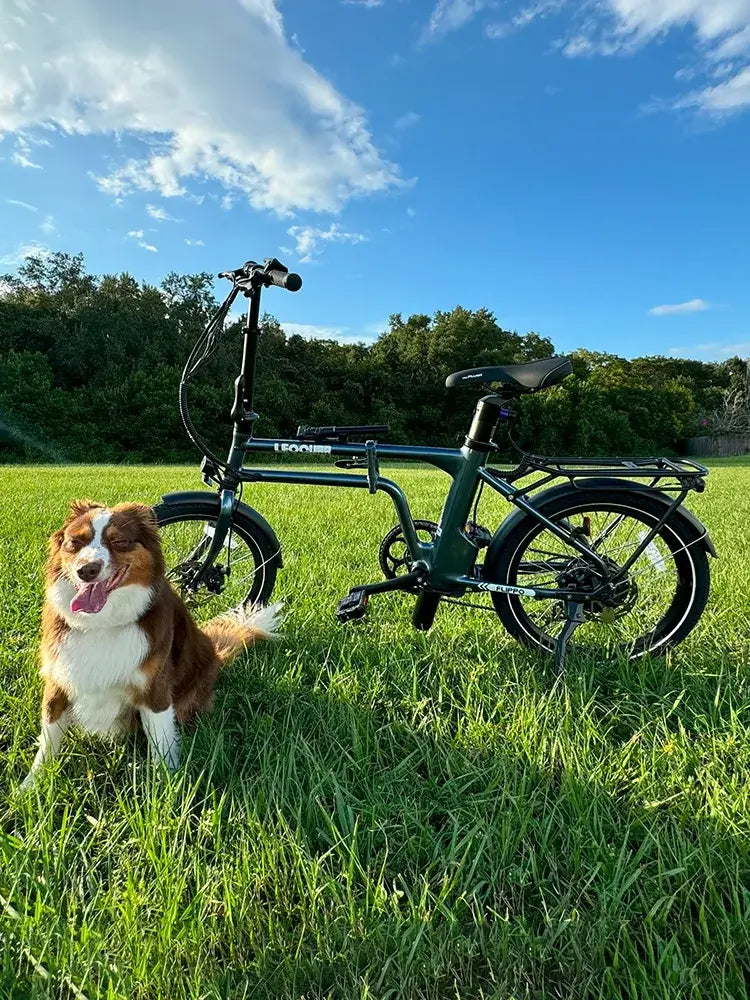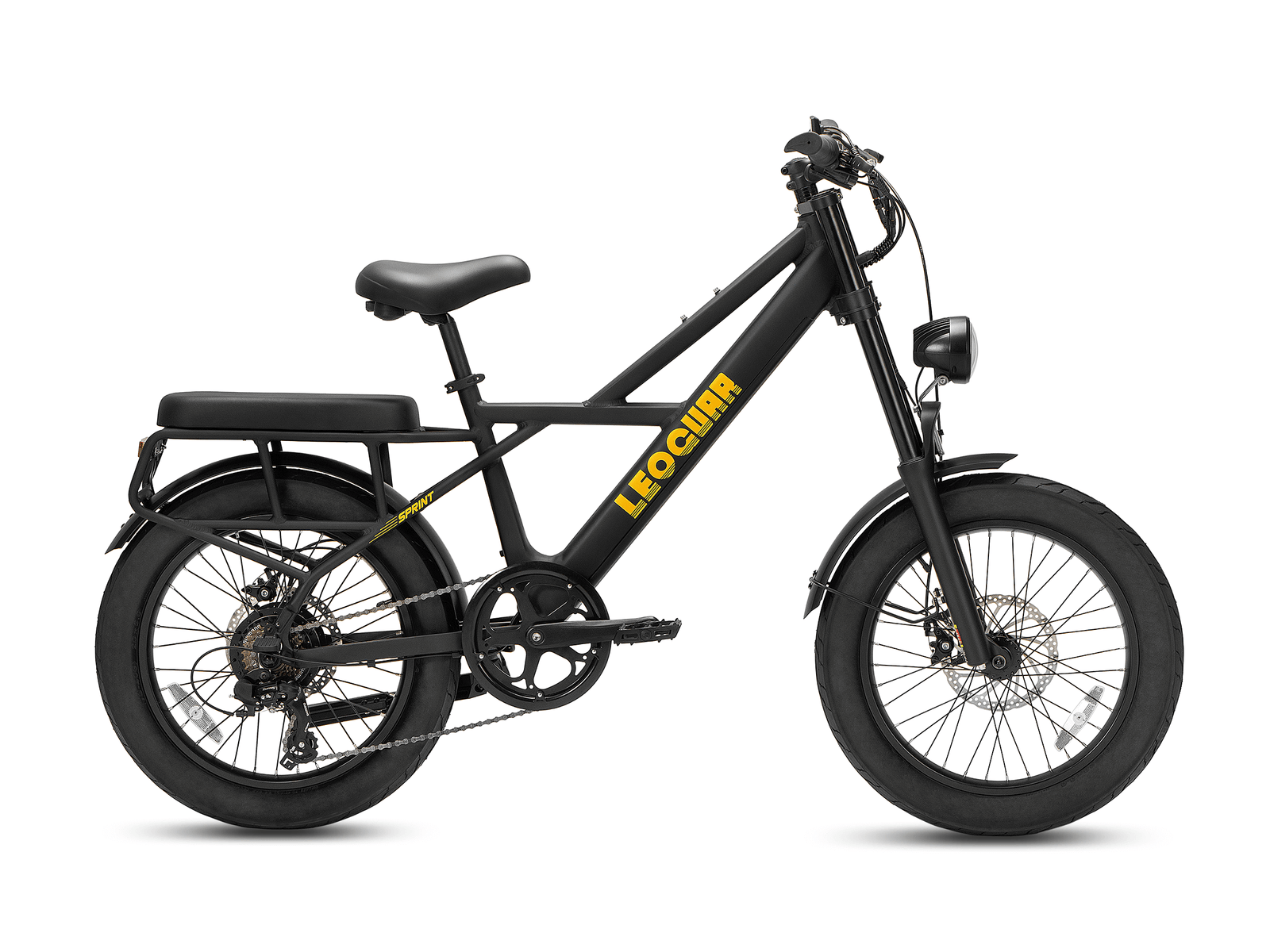
Electric Bike Baby Seat: Can You Safely Ride with Your Child?
Yes, You Can Put a Baby Seat on an Electric Bike
Yes, you absolutely can put a baby seat on an electric bike. It's a fantastic way to share the joy of cycling and make daily errands an adventure. But as parents, we know that fun can only follow safety. The unique characteristics of an e-bike—its weight, speed, and power—mean we need to be extra careful. This guide is built from our experience. We'll walk you through everything: confirming your e-bike is ready, choosing the perfect electric bike baby seat, and mastering the safe riding techniques that will give you peace of mind on every journey.
First: Non-Negotiable Safety Checks
Before you even think about bike models or seat types, there are three absolute rules. These are the foundation of riding safely with your child.
The Golden Rule of Age: A child must be at least 12 months old. The American Academy of Pediatrics (AAP) advises that infants younger than one year lack the neck and core strength to safely support a helmet and handle the jolts of a bike ride. There are no exceptions to this rule.
Helmets are Mandatory: This applies to both of you, on every single ride. A properly fitted helmet is the single most effective way to prevent a head injury, according to the National Highway Traffic Safety Administration (NHTSA). Set the example and protect your own brain; you're the one in control.
Know Your Local Laws: Rules for carrying children on bicycles, including e-bikes, can vary by state, county, or city. A quick search for "bicycle child passenger laws [your city/state]" is a crucial step to ensure you're riding legally.

E-Bike vs. Regular Bike Differences
An e-bike isn't just a bike with a motor. Its basic characteristics change how it handles, especially with a passenger. Understanding these differences is critical for safety.
Higher Speed and Braking Distance: E-bikes make it easy to reach and maintain higher speeds. Combined with the added weight of the motor, battery, child, and seat, your total mass is much greater. The physics are simple: more mass and more speed mean you need much more distance to come to a complete stop. Always leave several extra bike lengths of space in front of you.
Increased Weight and Higher Gravity: Your average e-bike weighs 50-70 lbs, double that of a regular bike. Adding a 25-40 lb child in a seat mounted high on the bike raises the center of gravity dramatically. This makes the bike feel top-heavy and less stable, particularly when you're starting, stopping, or moving at low speeds. A step-through frame is highly recommended as it eliminates the need to swing your leg over a high top tube and a child seat.
Instant Torque and Acceleration: The pedal-assist motor provides a powerful kick, especially on higher settings. This sudden acceleration can be jarring and unsettling for a child and can throw you off balance if you're not prepared. Never use a throttle to start from a standstill with a child on board. Always start in the lowest pedal-assist setting to ensure a smooth, controlled takeoff.
Frame and Rack Compatibility Issues: Not all e-bike frames are designed to handle the stress of a child seat. Rear-rack-mounted batteries can physically block the installation of a seat. Your bike's rack must be strong, frame-mounted, and rated for a heavy load. You cannot simply assume any e-bike will work with any electric bike baby seat.
Your E-Bike Readiness Checklist
Is your specific e-bike up to the task? Go through this five-point inspection before you purchase a seat.
Check Total Weight Capacity: Find your ebike maximum payload or total weight capacity in the user manual or on the manufacturer's website. Now, do the math: Your Weight + Your Child's Weight + Seat Weight (approx. 5-10 lbs) + Gear (backpack, locks, etc.). You must be well under the bike's stated limit.
Inspect the Rear Rack: If you plan to use a rear seat, the rack is your most critical component. It must be frame-mounted, meaning it bolts directly to the bike's frame, not the seatpost. Check for a weight rating stamped on the rack itself. We recommend a capacity of at least 27 kg (60 lbs) to be safe. If your bike has no rack or a flimsy one, you may need to install a heavy-duty aftermarket rack.
Examine Frame and Design: Never mount a child seat on a carbon fiber frame; the clamping forces can cause it to crack. Aluminum and steel frames are suitable. As mentioned, a step-through or low-step frame design is vastly superior for safety and ease of use when mounting and dismounting with a child.
Look for Clear Mounting Points: Check where the seat or its rack will attach. Are the mounting points (eyelets) on the frame free and clear? E-bike wiring, rear hub motors, or disc brake calipers can sometimes interfere with a secure installation.
Verify Your Brakes: With the extra weight and speed, superior braking is non-negotiable. Hydraulic disc brakes provide the best stopping power and modulation in all weather conditions. While mechanical disc brakes can be adequate, we strongly advise against using rim brakes for this purpose.
Choosing the Right Seat
Selecting the right electric bike baby seat is a balance of your child's age, your bike's design, and your riding style. There are three main categories.
| Seat Type | Pros | Cons | Best For |
|---|---|---|---|
| Front-Mounted | Child is in your line of sight; Easy to interact and talk; Weight is centered, better balance. | Lower weight/age limit (typically up to 33 lbs / 15 kg); Can interfere with your pedaling and steering; Offers less protection from wind. | Younger toddlers (1-2.5 years); Shorter, interactive rides on quiet paths. |
| Rear-Mounted | Higher weight/age limit (up to 48 lbs / 22 kg); Doesn't impede rider's pedaling or view; More seat models available. | Child is out of sight; Communication is difficult; Makes the bike rear-heavy, affecting handling. | Older toddlers (2-5 years); Longer commutes and daily errands. |
| Cargo/Longtail | Most stable platform; Can often carry two children plus cargo; Feels fully integrated with the bike. | Requires a specific and more expensive cargo e-bike; Not a simple add-on to a standard e-bike. | Families looking to replace a car; Transporting multiple children or significant gear. |
A note on rear seats: They come in two main styles. A rack-mounted seat attaches to a compatible rear cargo rack. A frame-mounted seat has an adapter that clamps directly onto your electric bike seat tube, with two prongs that the seat slides onto. A frame-mounted seat often provides better suspension for the child, but you must ensure the clamp is compatible with your frame's shape and diameter, and that it doesn't interfere with any battery mounts or cables.
Essential Seat Safety Features
When comparing models, don't get distracted by color or style. Focus on these non-negotiable safety features. A quality electric bike baby seat is a piece of safety equipment, not just an accessory.
- Five-Point Harness: This is the gold standard. It secures the child over both shoulders, at the hips, and between the legs, preventing them from wiggling out or standing up. A three-point harness is not sufficient.
- Adjustable Footrests with Straps: These prevent a child's feet and legs from dangling and potentially getting caught in the rear wheel's spokes—a catastrophic failure. Ensure they are adjustable to grow with your child.
- CPSC or ASTM Certification: Look for a sticker indicating the seat meets safety standards set by the Consumer Product Safety Commission (CPSC) in the US or ASTM International. In Europe, look for EN 14344. This is your assurance of third-party safety testing.
- High Back, Headrest, and Side Wings: A high back supports your child's back and neck, especially if they fall asleep. Recessed helmet pockets are a great feature. Cocoon-like side wings provide crucial protection in the event of a side impact or fall.
- Suspension: Some higher-end rear seats have a built-in suspension system (either in the frame mount or the seat itself). This feature significantly improves comfort for your child by absorbing bumps and vibrations from the road.

Mastering Safe Riding Techniques
Installation is only half the battle. Adjusting your riding habits is essential for keeping both of you safe and building your confidence.
- Practice Runs Without Your Child: Before the first real ride, install the seat and load it with a 20-30 lb bag of flour, rice, or a dumbbell. Ride around an empty parking lot. Get a feel for the altered balance, the slower acceleration, and the longer braking distance.
- Master the Mount and Dismount: With a step-through frame, this is easy. With a standard frame, practice leaning the bike toward you and stepping through the front triangle. Never try to swing your leg over the child and seat. Always use a sturdy, wide-base kickstand, preferably a dual-leg one.
- Start in the Lowest Assist Level: Always begin your ride in assist level 0 or 1. This prevents a sudden, jerky start that could surprise you and your child. Only increase the assist once you are balanced and rolling smoothly.
- Brake Early and Gently: Anticipate stops well in advance. Apply both brakes together, with slightly more pressure on the rear to maintain stability. Avoid sudden, hard braking.
- Take Wider Turns: The bike will feel less nimble. Slow down before corners and take them wider than you normally would to maintain your balance.
- Avoid Bumps and Curbs: Be vigilant about scanning the road ahead for potholes, bumps, and debris. Never ride up or down curbs; dismount and walk the bike.
- Be a Rolling Billboard: Assume you are invisible to cars. Use bright, flashing lights (front and rear) day and night. Wear bright clothing. Make eye contact with drivers at intersections.
- Communicate With Your Co-Pilot: Talk to your child. Tell them when you're about to start, stop, or turn. It keeps them engaged and prepared for the bike's movements.
Our Final Thoughts
Riding with your child on an electric bike can create some of your most cherished family memories. It turns a commute into a connection and an errand into an exploration. The key is to approach it with preparation and respect for the equipment. By verifying your bike's compatibility, choosing a high-quality electric bike baby seat with essential safety features, and adopting a cautious, defensive riding style, you are setting the stage for countless safe and joyful adventures. The freedom and fun are well worth the effort. Get out there and ride together.
FAQ
1. Q: What age can my child start riding in an electric bike baby seat?
A: Your child must be at least 12 months old. The American Academy of Pediatrics states that infants younger than one year lack the neck and core strength to safely support a helmet and handle bike ride jolts.
2. Q: Do both the child and adult need to wear helmets?
A: Yes, helmets are mandatory for both rider and child on every single ride. A properly fitted helmet is the most effective way to prevent head injuries according to safety experts.
3. Q: Can I install any baby seat on my electric bike?
A: No, not all e-bikes are compatible with child seats. You need to check your bike's weight capacity, frame material, mounting points, and ensure your rear rack is frame-mounted and rated for heavy loads.
4. Q: What's the difference between front-mounted and rear-mounted seats?
A: Front-mounted seats keep your child in sight and offer better balance but have lower weight limits. Rear-mounted seats accommodate older/heavier children but put the child out of sight and make the bike rear-heavy.
5. Q: How should I adjust my riding style with a child passenger?
A: Start in the lowest assist level, brake earlier and more gently, take wider turns, avoid bumps and curbs, and always communicate with your child about upcoming stops and turns.







































Leave a comment